In pictures: Mammoths of the ice age
- Published

Mammoths of the Ice Age opens at the National Museum of Scotland in Edinburgh on Friday and runs until 20 April. This major exhibition was created by The Field Museum in Chicago and it will be the first time that this collection of significant objects from the Ice Age will be on show together in Europe.
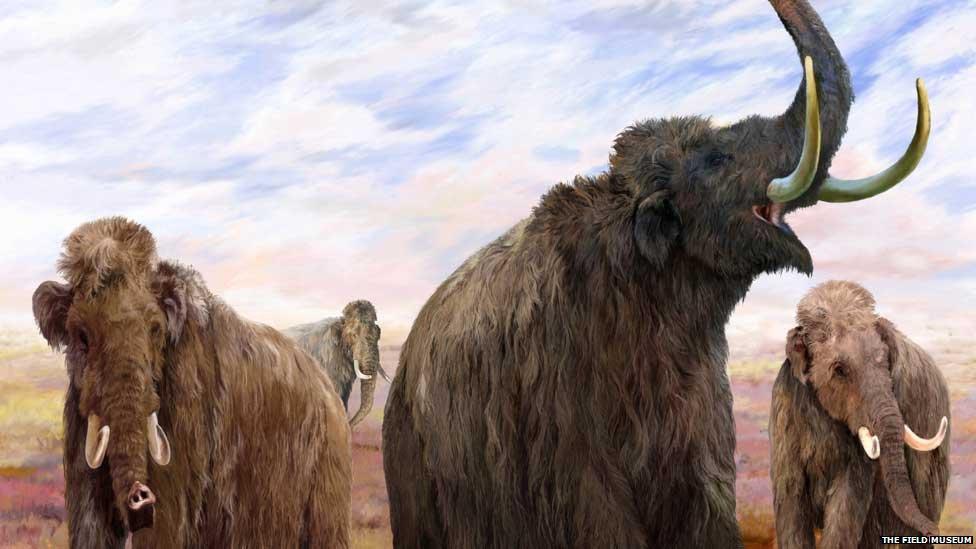
Mammoths of the Ice Age explores the mysteries of the ice age and reveals what life was like for the iconic mammals of this era; the mammoth and the mastodon. Illustration by Velizar Simeonovski.

The family tree of elephants, mammoths and mastodons can be traced back 55 million years to its origin in Africa. This skeleton of an American mastodon shows the beast’s tusks have a more pronounced curve than those of today’s elephants. Photo by John Weinstein.
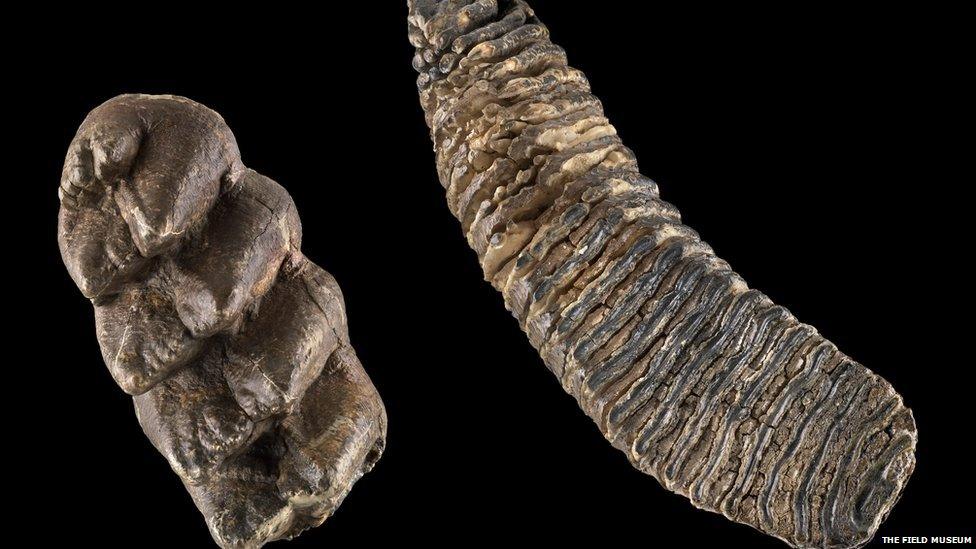
Mastodons were shorter and stockier than mammoths, with thicker bones and differently shaped tusks. In North America, mastodons lived alongside mammoths because they had different diets and so did not compete for food, with a mammoth consuming an estimated 226 kg of vegetation every day. The mastodon tooth (left), with its sharp cusps was used for shredding bark and twigs, while the mammoth tooth (right) was used to grind leaves and grasses. Photo by John Weinstein
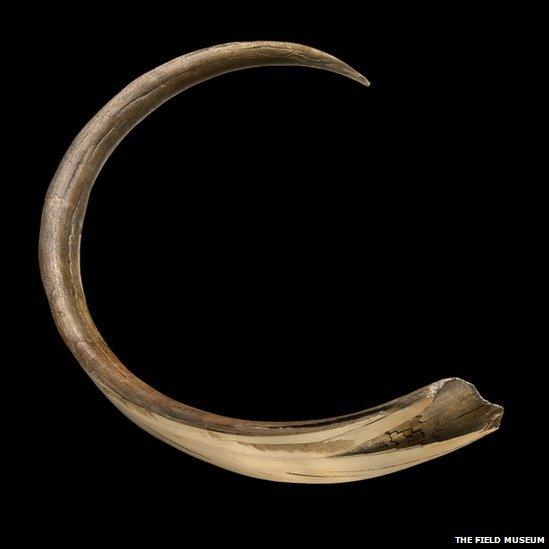
This is a mammoth tusk. Similar to rings on a tree, mammoth tusks grew in layers, year by year. Scientists examine mammoth tusks to discover how old the animal was at the time of its death. Photo by John Weinstein.
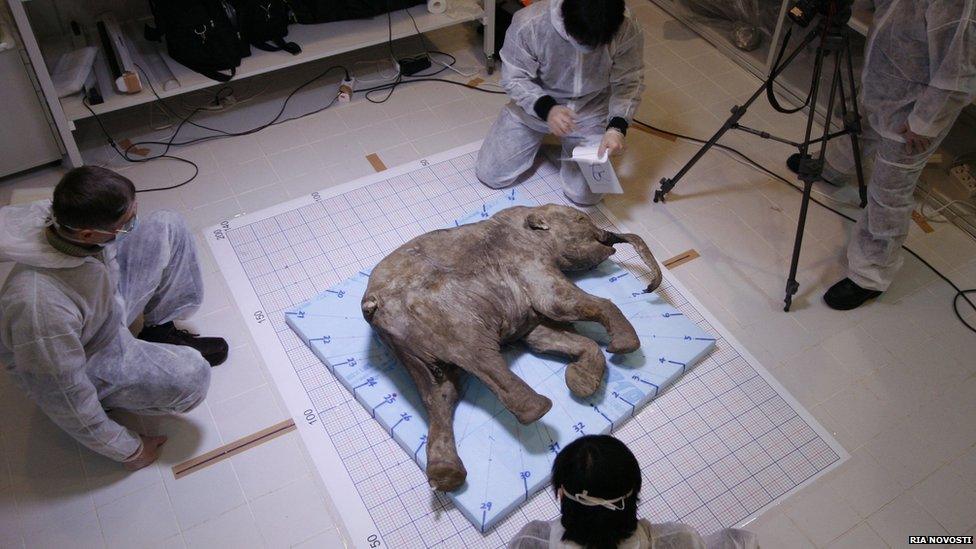
Baby woolly mammoth Lyuba is 40,000 years old and one of the best preserved mammoths ever discovered. She was unearthed by a Siberian reindeer herder and his two sons in 2007. An international team of scientists studied Lyuba after her discovery, performing an autopsy and DNA analysis.
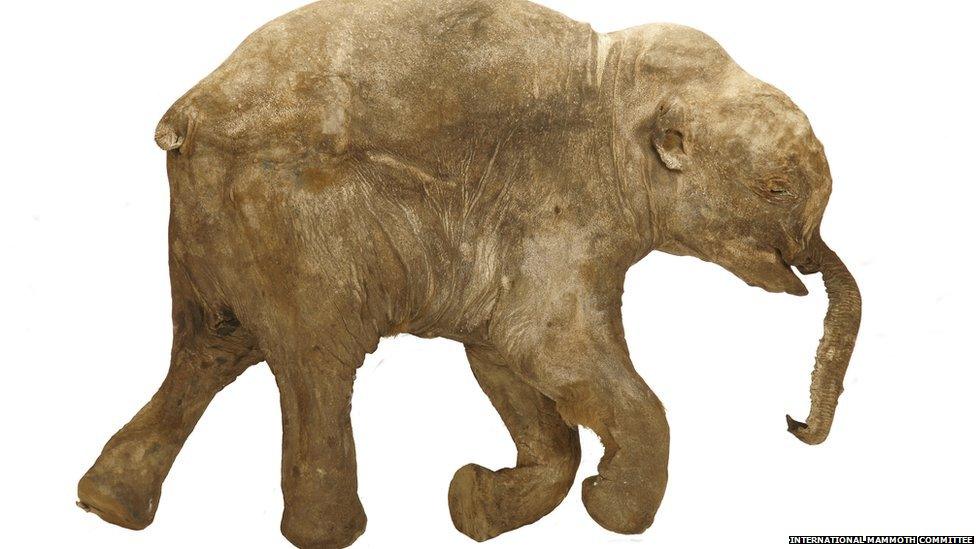
This is the real Lyuba. A detailed replica of Lyuba will be on show in Mammoths of the Ice Age. Lyuba’s trunk collapsed when she died. Scientists theorise that the baby mammoth was trapped in silt and eventually suffocated. From Lyuba we can learn much about how mammoths behaved, from what they looked like to what they ate
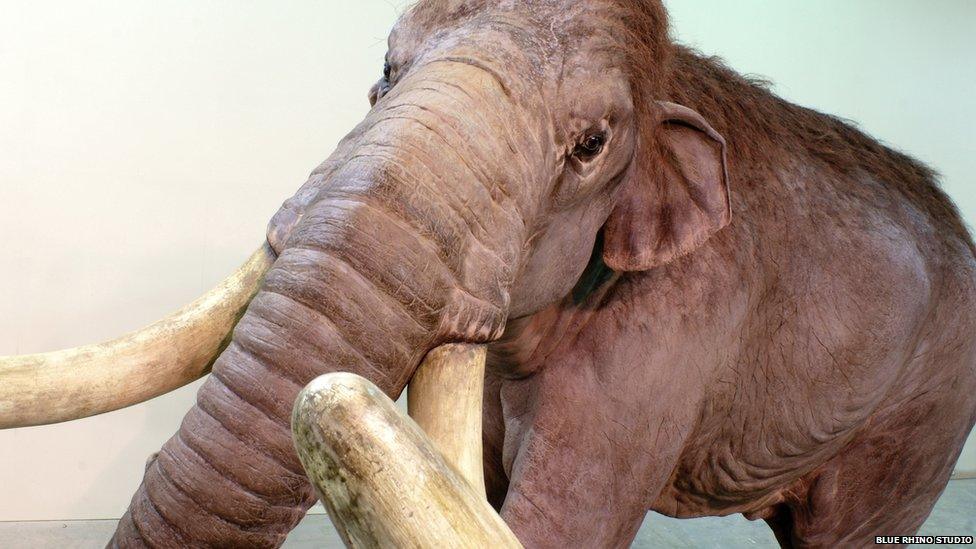
Visitors will be able to see and touch the biggest and smallest mammoths that ever lived. Going on display is a full-scale replica of an impressive Columbian mammoth, a cousin of the woolly mammoth, which would have stood about 4 metres tall
![Mammoths and mastodons shared their habitat with other animals—many now extinct—including sabre-tooth cats [pictured], short-faced bears, ancient horses, and dire wolves](https://ichef.bbci.co.uk/ace/standard/549/mcs/media/images/72241000/jpg/_72241155_mammothsnine.jpg)
Mammoths and mastodons shared their habitat with other animals— many now extinct —including sabre-tooth cats [pictured], short-faced bears, ancient horses, and dire wolves
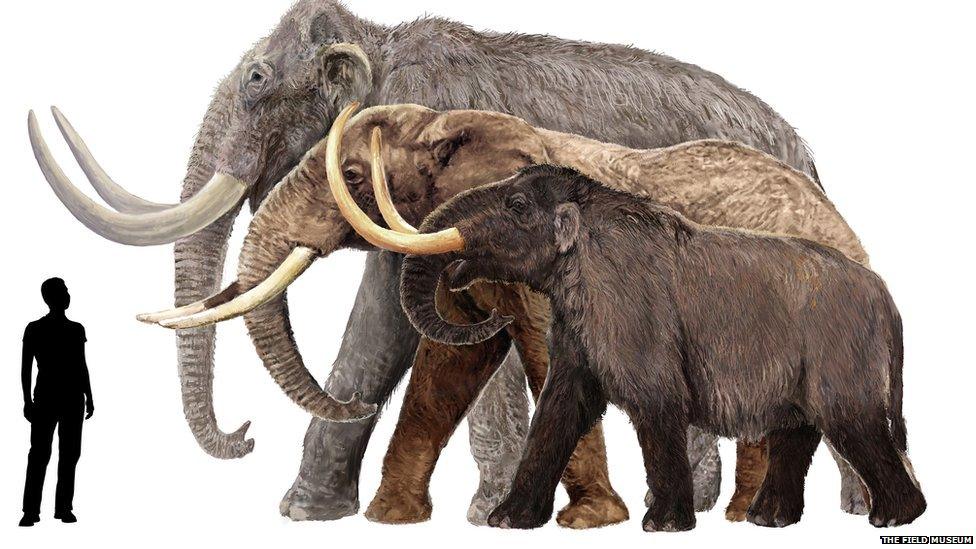
This sketch shows a Columbian mammoth, an African elephant, and an American mastodon (from back to front) next to a 6ft-tall human. Not all mammoths were gigantic, in fact the pygmy mammoth was the size of a large horse. Illustration by Velizar Simeonovski
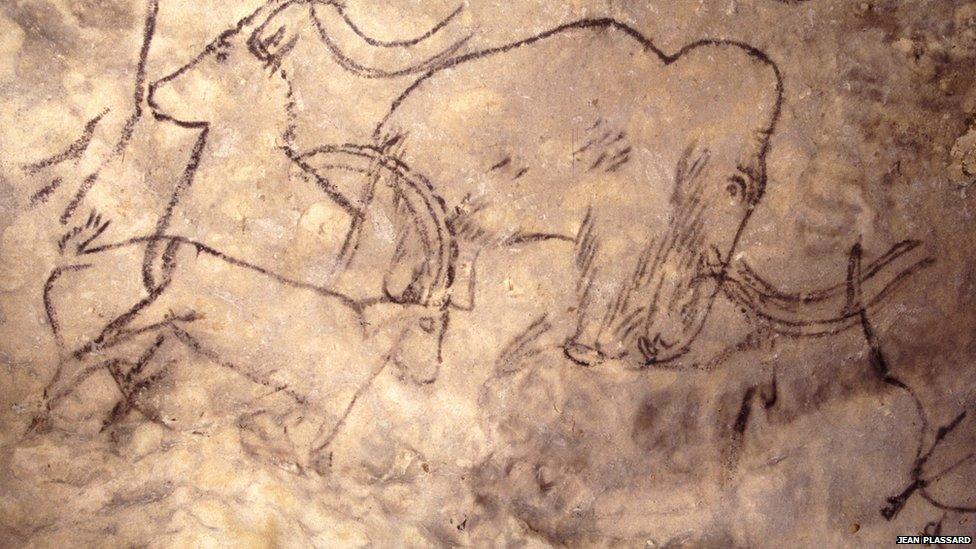
Unlike dinosaurs and other prehistoric mammals, mastodons and mammoths lived side by side with humans for thousands of years. The last mammoths survived on the remote Wrangel Island in the Arctic Sea until just 4,000 years ago. Mammoths and mastodons proved to be a source of food for early people as well as artistic inspiration. This depiction of a mammoth, painted on the walls of Rouffignac cave in France, dates back 15,000 to 20,000 years ago.
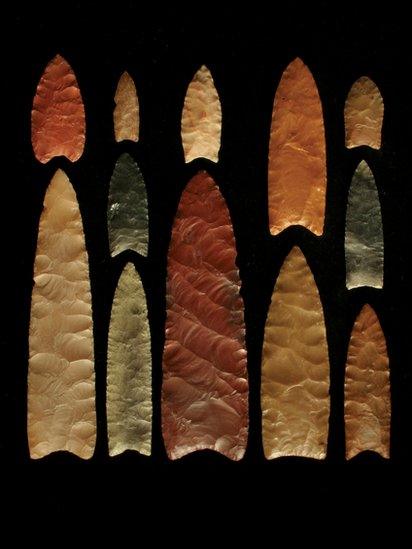
Exploring why mammoths may died out, Mammoths of the Ice Age investigates the theories surrounding their extinction, such as climate change, hunting by humans, cross-species disease and a meteorite hitting the Earth. On display are these beautiful spear points, known as Clovis points. The Clovis points might have been used for hunting mammoths and mastodons. Photo by Charlotte Pevny. Courtesy of the Center for the Study of the First Americans, Texas A&M University
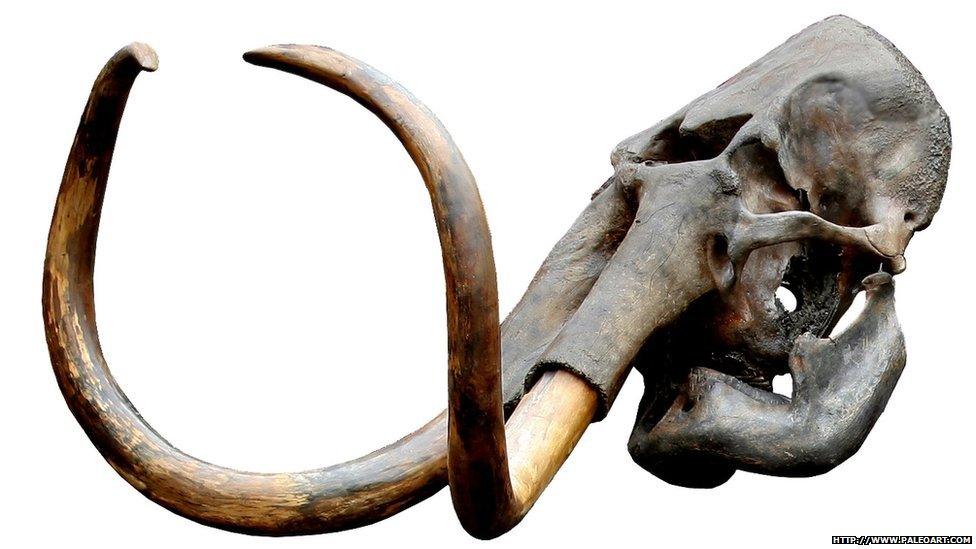
This large skull is from a woolly mammoth. The exhibition includes fossil skulls, as well as life-size replicas of these ancient beasts, skull casts, teeth, tusks and fossil jaws. Visitors will be able to manipulate a mechanical trunk to pick up objects and help a mammoth balance the weight of its tusks. Or try their hand at jousting with tusks, imitating the behaviour of adult male mammoths who sparred for dominance and to win breeding rights as they roamed the landscape of Siberia thousands of years ago.